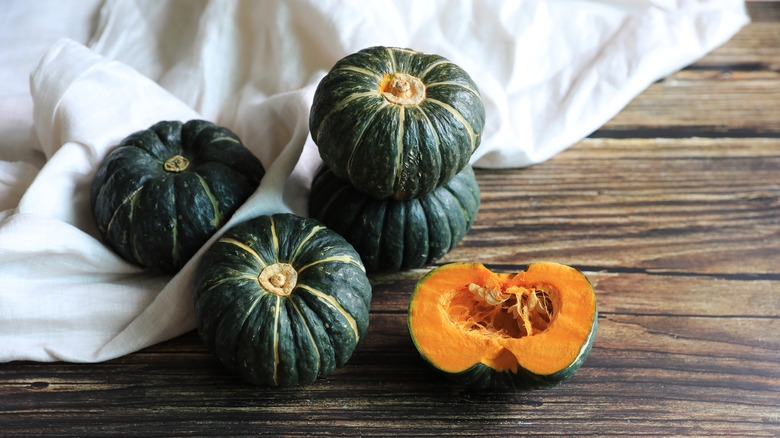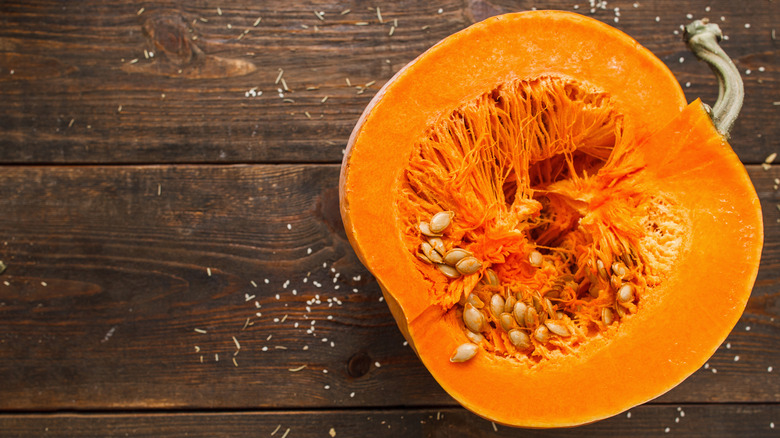Is Pumpkin A Fruit Or Vegetable? Here's The Truth
If you've ever cooked with pumpkin — whether you were whipping up a butternut squash soup, pumpkin banana bread, or a classic pumpkin pie — you may have wondered what kind of ingredient you were working with, exactly. There are a wide variety of pumpkins commonly used in cooking, ranging from the sweet sugar pumpkins typically used in desserts (via The Kitchn) to the Japanese pumpkin kabocha that's often simmered into a stew or fried into tempura, per MasterClass. Because pumpkin is incorporated into both sweet and savory dishes, one might wonder: Is it a fruit or a vegetable?
According to Delish, as strange as it might seem for a produce item that often makes its way onto the dinner plate, pumpkins — and their winter squash relatives such as butternut and acorn (via Allrecipes) — are biologically a fruit. Surprised? Read on to learn more about why a pumpkin is a fruit and not a vegetable.
All fruits have seeds inside
If you've cooked with pumpkins or winter squash, one feature you've probably noticed about them — other than the tough outer skin you often need to peel off — is the plethora of seeds you'll find when you cut them open. After all, who hasn't carved a Jack O' Lantern, and saved the seeds for roasting into a salty snack? As explained by Delish, these seeds demonstrate that a pumpkin is a fruit. All fruits emerge from the flowering part of a plant, and since biologically they are the ovaries of that plant, they are full of seeds. Other common produce items that we might think of as vegetables since they are savory include tomatoes, cucumbers, bell peppers, and avocados — all of which contain seeds.
So if all fruits contain seeds, then what are vegetables, exactly? According to Delish, vegetables are other parts of the plant, including its stems, leaves, and bulbs. Some common vegetables used in cooking include chard, kale, Brussels sprouts, lettuce, celery, and beets — no seeds there. So the next time you're breaking down some produce and aren't sure if it's a fruit or a vegetable, look for seeds — or their absence — and you'll be able to tell for sure.

